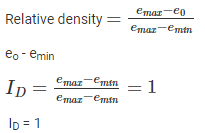Test: Civil Engineering- 2 - SSC JE MCQ
30 Questions MCQ Test - Test: Civil Engineering- 2
A brick laid with width parallel to the front direction of wall is:
The ingredient of paint which are used to hide the surface irregularities and imparts colour is known as ________.
What is the representative geometric mean size of an aggregate sample if its fineness modulus is 3.0?
When cement and lime are used in definite proportions as binding material, the type of mortar is known as:
__________ is used to ensure that the thickness of plastering is uniform.
Which of the seasoning method is adopted for the rapid seasoning of timber on large scale to obtain any desired moisture content?
A sample of cement is said to be sound when it does not contain free
The defect in timber that causes longitudinal separation of woods between the annular rings is known as ________.
A revised estimate is prepared when the expenditure on the work exceeds or likely to exceed the amount of administrative sanction by more than:
The quantity of brickwork in a semi-circular arch of 3.50 m span and 30 cm thickness of arch and 35 cm breadth of wall?
The value of the property obtained after deducting the amount of yearly repairs from the gross income is known as:
In case of steel rolling shutters, for estimation of painted area, the plain area is multiplied by ______:
When actual cost of construction plus certain profit is paid to the contractor then such a contract is known as:
Which of the following is not included in the “Outgoings” while valuation of a building?
A property in delhi fetches a net annual income of Rs. 1150 after deducting all the outgoings. The Capitalised value of the property if the rate of interest is 7.5 % per annum is?
Who among the following has full authority to technical sanction the work up to Rupees 1 crore?
Spire test is to check which of the following permanent adjustments of the theodolite?
Removal of parallax in a theodolite can be achieved by focusing:
Which of the following is the expression for the additive constant, if f is the focal length of objective and i is the stadia interval?
The length and breadth of a field of area 33600 m2, on map is 12 cm and 7 cm respectively. The R.F of the scale will be?
Which of the following represents the percentage limit of porosity of the compacted sand?
What is relative density of sand if the sand in-situ is in its densest state?
A soil sample is partially saturated, its natural moisture content was found to be 22% and bulk density 2 gms/c.c, the void ratio of the sample is?
Grain size of soil indicats that D10 = 0.004 mm. D30 = 0.002 mm and D60 = 0.007 mm. The coefficient of gradation of soil is



























